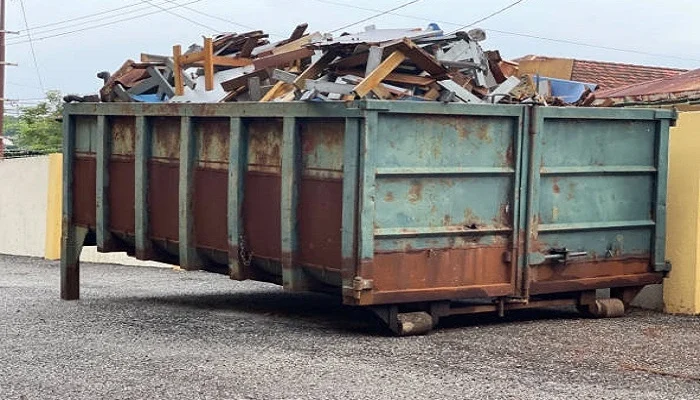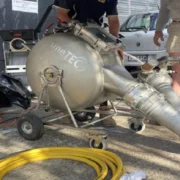Introduction to Scrap Metal Sorting
Sorting scrap metal properly is a vital step toward efficient recycling and environmental sustainability. As the demand for sustainable practices grows, more people consider scrap metal recycling a viable way to conserve resources. Sorting metals by type and quality before they reach recycling facilities like metal recycle centers is essential. This initial sorting boosts the value of recycled materials and streamlines the recycling process, using fewer resources and generating less waste. By properly sorting metal, individuals contribute to reducing the burden on landfill sites, thereby playing a part in safeguarding ecosystems for future generations.
Benefits of Proper Scrap Metal Sorting
Sorting scrap metal offers numerous benefits, both financially and environmentally. Proper sorting increases the purity of recycled materials, enhancing their market value. This strategic practice reduces the cost burden on recycling facilities, as they expend fewer resources in separating mixed metals. Additionally, minimizing contamination risks ensures the reprocessed metal is high quality and suitable for various applications, from manufacturing to construction. According to the Environmental Protection Agency, effective recycling practices, including sorting, help conserve energy and drastically reduce industrial pollution. Efficient scrap metal sorting also reduces the environmental footprint by decreasing the demand for new metal mining, preserving natural habitats and lowering the energy demands of new metal production.
Types of Scrap Metal and How to Sort Them
Understanding the different types of scrap metal is key to efficient sorting. Common categories include ferrous metals like steel and iron, which are magnetic and often used in construction, and non-ferrous metals like copper, aluminum, and brass, which are non-magnetic and used in various industries. Sorting begins by evaluating the metal type, often using tools like magnets for easy identification. Sorting metals into respective bins ensures that high-quality, uncontaminated batches are processed, helping maintain the integrity and value of the recycled materials.
Ferrous Metals
Ferrous metals contain iron and are frequently found in appliances, automotive parts, and industrial machinery. These are typically magnetic, helping sorters easily identify them. Sorting ferrous from non-ferrous metals reduces contamination and prepares the metals for appropriate recycling processes. Understanding how ferrous metals are used allows individuals to efficiently search and identify scrap metal in every aspect of their daily lives, encouraging more proactive recycling habits.
Non-Ferrous Metals
Non-ferrous metals, which include aluminum, copper, and brass, do not contain iron and are valued for their resistance to corrosion and conductivity. These metals are commonly found in electronics, wiring, and household items. Proper sorting of non-ferrous metals maximizes their recyclability and ensures they are efficiently repurposed. By keeping different non-ferrous metals separate, recyclers can ensure these valuable resources are processed efficiently, maintaining their integrity and value.
Steps to Start Sorting Scrap Metal at Home
Implementing an effective sorting system at home is achievable with simple steps. Start by designating separate bins for different metal types: ferrous, non-ferrous, and precious metals. Educate everyone in the household about the importance of keeping metals clean and free from non-recyclable materials. Regularly check local recycling guidelines to stay informed about acceptable materials and sorting practices. These steps ensure that your household contributes effectively to a wider recycling infrastructure. Moreover, maintaining an efficient sorting system fosters a culture of sustainability, encouraging family members to be mindful of their consumption patterns. It also instills a sense of responsibility among younger generations, teaching them the importance of environmental stewardship.
Common Challenges and How to Overcome Them
Despite the benefits, several challenges can arise in metal sorting. Contaminants such as plastic or rubber attachments can devalue scrap metals and complicate recycling. To address this, spend time stripping down metals to their purest forms and removing attached components. Additionally, limited local resources for certain types of metal recycling might pose logistical challenges. Collaborating with local environmental groups or community recycling programs can improve accessibility to the necessary recycling tools and facilities. Encouraging dialogue and community partnerships can establish broader recycling networks, creating a more efficient system for everyone involved.
Community Initiatives and Impact
Communities worldwide recognize the importance of sorting scrap metal collectively, leading to various successful initiatives. Local projects often involve educational programs demonstrating the benefits of sorting metals properly and providing resources for better recycling practices.
Future Trends in Scrap Metal Recycling
The landscape of scrap metal recycling is continuously evolving, with technology playing a pivotal role in shaping its future. Innovations such as automated sorting systems and advanced material identification techniques are set to increase efficiency and reduce human error. These advancements and growing environmental awareness suggest a promising outlook for the recycling industry. As global policies increasingly favor sustainable practices, well-sorted recycling processes like those employed by forward-thinking initiatives will become more prevalent, leading to improved resource conservation and reduced environmental impact. Engaging with these trends keeps individuals and communities at the forefront of sustainable practices, ensuring a proactive approach toward reducing waste and conserving resources for future generations.
Drain Cleaning Business: Clearing the Path to a Healthy Home









Comments